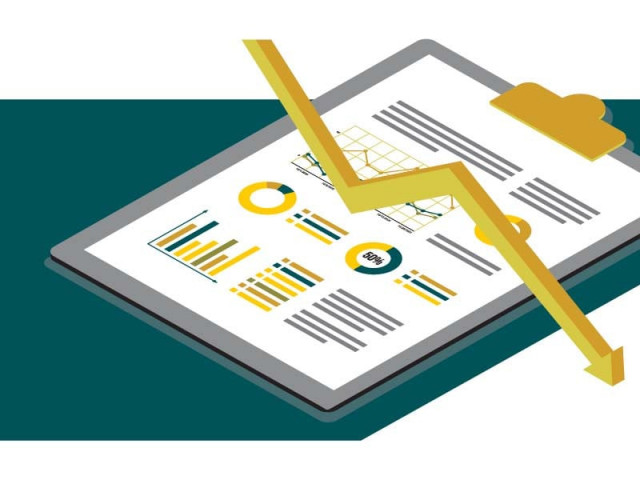Growth to be far lower than forecast: SBP
Steps taken to control demand, devastating floods weigh heavily on growth outlook

Pakistan’s central bank has painted a bleak outlook of the national economy, saying growth in the current fiscal year will be “significantly lower than...(previously) revised projection of around 2%.”
In the previous two fiscal years, FY21 and FY22, Pakistan’s economy grew by 6% each year.
However, the central bank seems to be optimistic while making the latest projection for economic growth, which comes in stark contrast to forecasts of a few research houses, which saw a contraction in the current fiscal year ending June 30, 2023.
In its half-yearly report on the state of Pakistan’s economy in Jul-Dec 2022 released on Friday, the State Bank of Pakistan (SBP) said “this reflects a broad-based moderation in economic activity in the wake of dampened performance of both agriculture sector and industrial output, with its negative spillovers for the services sector.”
Measures taken to control demand in the economy and the devastating floods of 2022 have weighed heavily on the growth outlook for FY23.
The bank anticipated that inflation would remain elevated in the range of 27% to 29% compared to around 12% in FY22. On the other hand, the balance of international payments will remain vulnerable despite a significant improvement in current account while revenue collection will stay low and fiscal deficit will spike.
Tight liquidity supplies in global markets also carried risks for further slowdown in the inflow of workers’ remittances and export earnings, it said.
The SBP pointed out that the analysis and projections in the half-yearly report were prepared keeping in view the data outturns for July-December FY23, and finalised in March 2023, using the data and developments as of then.
On the fiscal side, according to the central bank, the deceleration in Federal Board of Revenue’s (FBR) tax collection on account of temporary import restrictions and subdued economic activity alongside sharp growth in current expenditures driven by higher interest payments on public debt in the first half of FY23 caused the narrowing of fiscal space.
“As a result, the contraction in federal development expenditures to contain deterioration in the fiscal position has posed challenges for the FY23 economic outlook.”
Meanwhile, the anticipation of further slowdown in economic activity amid monetary tightening and other demand-curtailing measures is likely to decelerate the current growth momentum for tax collection, thus, widening the fiscal deficit.
Despite a substantial improvement in the current account deficit by $5.5 billion in the first half of FY23, the external account pressure continued to persist amidst scheduled debt repayments and markedly lower foreign inflows which, in turn, resulted in a severe drawdown in foreign exchange reserves.
In view of the prevailing domestic macroeconomic uncertainty, impact of floods, and increasing interest rate environment globally, “the external account vulnerabilities are likely to remain at an elevated level in FY23.”
However, the resumption of IMF’s Extended Fund Facility (EFF) would help assuage the overall external sector concerns by increasing access to multilateral and bilateral financing avenues, the SBP pointed out.
Downside risks to the external sector outlook include sharper-than-expected slowdown in global demand that could impact exports and workers’ remittances negatively. Likewise, global and domestic uncertainty also poses downside risks.
On the upside, more-than-expected slowdown in domestic demand or relatively sharp fall in global commodity prices could improve the current account deficit, it voiced hope.
The central bank expected the inflation reading to remain elevated within the range of 27% to 29% in FY23. “The deteriorating inflation outlook is predominantly ascribed to the persistent uptick in food and energy inflation.”
The near-term risks to inflation outturns could be explained by various factors, which include the second-round impact of recent exchange rate depreciation, fiscal adjustments including upward revisions in general sales tax, gas and electricity tariffs, and an upward drift in inflation expectations.
In addition, uncertainty regarding crude oil price increase due to faster-than-expected growth in Chinese economy and lower-than-targeted wheat production in Pakistan were other upside risks to the inflation outlook, the bank said.
In the first half of FY23, Pakistan’s macroeconomic conditions deteriorated despite a policy-induced improvement in the external current account and primary fiscal balance.
Uncertainty surrounding the completion of IMF programme’s ninth review, insufficient external financing and low level of foreign exchange reserves remained major concerns, which were exacerbated by the fallout of flash floods and political instability during the first half.
Published in The Express Tribune, May 20th, 2023.
Like Business on Facebook, follow @TribuneBiz on Twitter to stay informed and join in the conversation.



















COMMENTS
Comments are moderated and generally will be posted if they are on-topic and not abusive.
For more information, please see our Comments FAQ